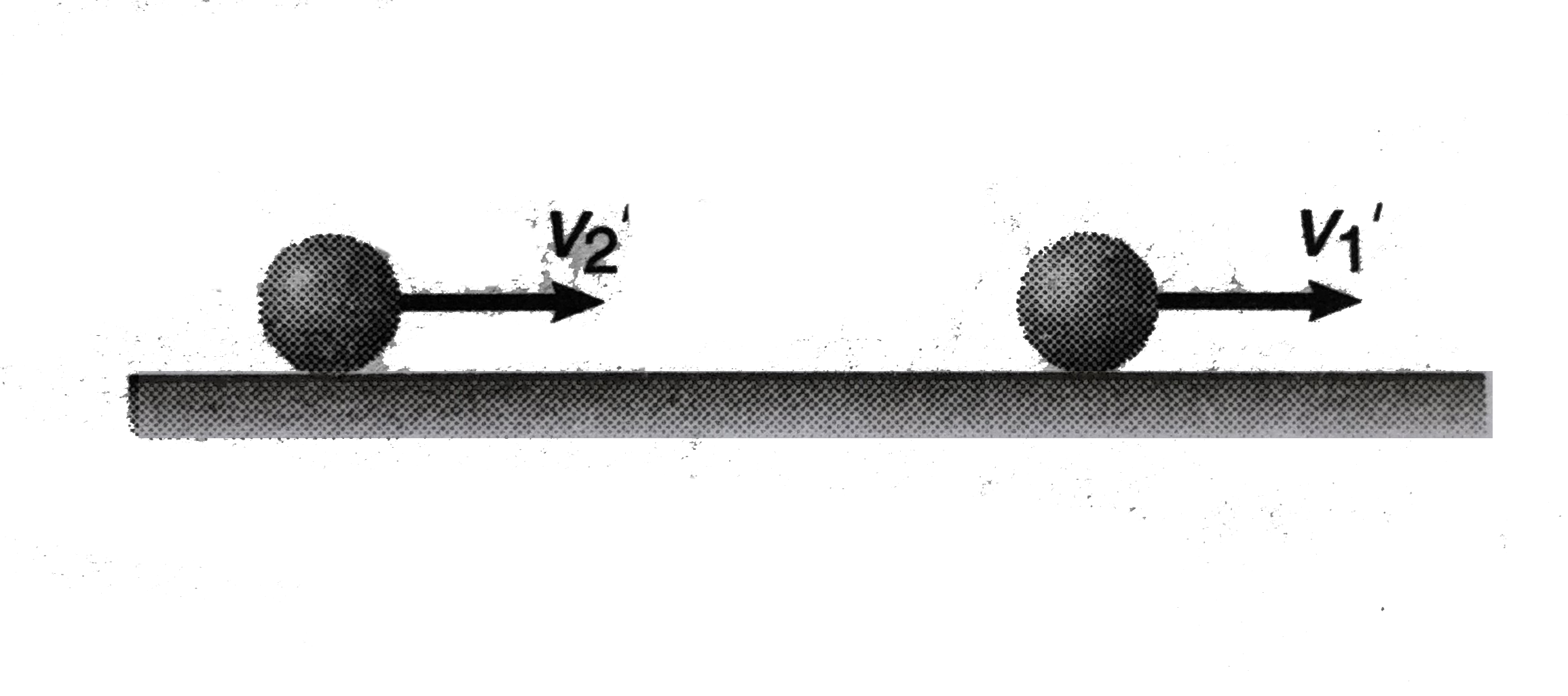Three balls of masses m1,m2 and m3 are lying in a straight line. The first ball is moved with a certain velocity so that it strikes the second ball directly and itself comes to rest. The second ball collides with the third and is itself reduced to rest. If e is the coefficient of restitution for each ball, write down the relation of m3 in terms of m1 and m2.

After first impact v1=0
⇒(m1−em2m1+m2)u1=0⇒m1=em2……….i

After second impact v3=0
⇒(m1−em3m1+m3)v2=0⇒m2=em3………ii
From i and ii m22=m1m3
Topper's Solved these Questions
- CENTRE OF MASSBOOK - CENGAGE PHYSICSCHAPTER - CENTRE OF MASSEXERCISE - Subjective
23 Videos
- CENTRE OF MASSBOOK - CENGAGE PHYSICSCHAPTER - CENTRE OF MASSEXERCISE - Single Correct
141 Videos
- CENTRE OF MASSBOOK - CENGAGE PHYSICSCHAPTER - CENTRE OF MASSEXERCISE - Exercise 1.2
23 Videos
- CALORIMETRYBOOK - CENGAGE PHYSICSCHAPTER - CALORIMETRYEXERCISE - Solved Example
13 Videos
- DIMENSIONS & MEASUREMENTBOOK - CENGAGE PHYSICSCHAPTER - DIMENSIONS & MEASUREMENTEXERCISE - Integer
2 Videos
Similar Questions
Ball 1 collides directly with another identical ball 2 at rest. Velocity of second ball becomes two times that of 1 after collison. Find the coefficient of restitution between the two balls?
View SolutionBall 1 collides with another identical ball at rest. For what value of coefficient of restitution e, the velocity of second ball becomes two times that of 1 after collision? _____.
View Solution
Knowledge Check
Three balls of masses m1,m2,m3 are lying in a straight line. The first ball is moved with a certain velocity so that it strikes the second ball directly, then the second ball collides with the third. If the coefficient of elasticity for each ball is e and after impact first ball comes to rest, while after second impact the second ball comes to rest. Then m1,m2,m3 are in
AA.P.BG.P.CH.P.DNone of theseA ball of mass m moving at a speed v collides with another ball of mass 3m at rest. The lighter block comes to rest after collisoin. The coefficient of restitution is
A(a) 12B(b) 23C(c) 14D(d) None of theseA ball of mass m moving with a speed 2v0 collides head-on with an identical ball at rest. If e is the coefficient of restitution, then what will be the ratio of velocity of two balls after collision?
A1−e1+eB1+e1−eCe−1e+1De+1e−1
A ball of mass m moving at a speed v makes a head on inelastic collision with an identical ball at rest. The kinetic energy of the balls after the collision is 34th of the original. Find the coefficient of restitution.


View SolutionA ball of mass m moving with a speed v makes a head on collision with an identical ball at rest. The kinetic energy after collision of the balls is three fourth of the original kinetic energy. The coefficient of restitution is
View SolutionFour smooth steel balls of equal mass at rest are free to move along a straight line without friction. The first ball is given a velocity of 0.4 m/s . It collides head on with the second elastically, the second one similarly with the third and so on. The velocity of the last ball is
View SolutionFour smooth steel balls of equal mass at rest are free to move along as straight line without friction. The first ball is given a velocity of 0.4m/s It colloids head on with the second elastically, the second one similarly with the third and so on. the velocity of the last ball is :
View SolutionFour smooth steel balls of equal mass at rest are free to move along as straight line without friction. The first ball is given a velocity of 0.4m/s It colloids head on with the second elastically, the second one similarly with the third and so on. the velocity of the last ball is :
View Solution
